India’s coastline is not just a beautiful natural resource; it’s a vital part of our ecosystem. One of the unsung heroes of coastal protection is the mangrove. These unique forests are crucial in shielding our coasts from natural disasters, supporting biodiversity, and providing resources for local communities. Let’s delve into the role of mangroves in coastal protection and understand why they are so important.
What Are Mangroves?
Mangroves consist of trees and shrubs that flourish in coastal intertidal areas. They are uniquely adapted to salty and brackish waters, making them vital to the health of coastal ecosystems. Mangroves have complex root systems that stabilize shorelines, reduce Erosion, and provide habitat for diverse wildlife.
In India, we find mangroves along the eastern and western coasts, with notable concentrations in the Sundarbans in West Bengal, the Andaman and Nicobar Islands, and Gujarat and Maharashtra coastal regions. These forests are essential not only for the environment but also for the livelihood of many coastal communities.
How Mangroves Protect Our Coasts
Mangroves act as a natural barrier against the forces of nature. Their dense root systems help dissipate the energy of waves and storm surges, reducing the impact on inland areas. Here’s how they contribute to coastal protection:
Reducing Erosion
Mangrove roots hold the soil together, preventing it from being washed away by waves and tides. This stabilization is critical in protecting coastlines from Erosion, which can lead to land loss and property and infrastructure damage.
Shielding Against Storms and Tsunamis
During storms and tsunamis, mangroves act as a buffer, absorbing the impact of strong waves and high winds. By slowing down the water’s force, they protect inland areas from flooding and destruction. The Sundarbans, for example, have significantly reduced the damage caused by cyclones to nearby regions.
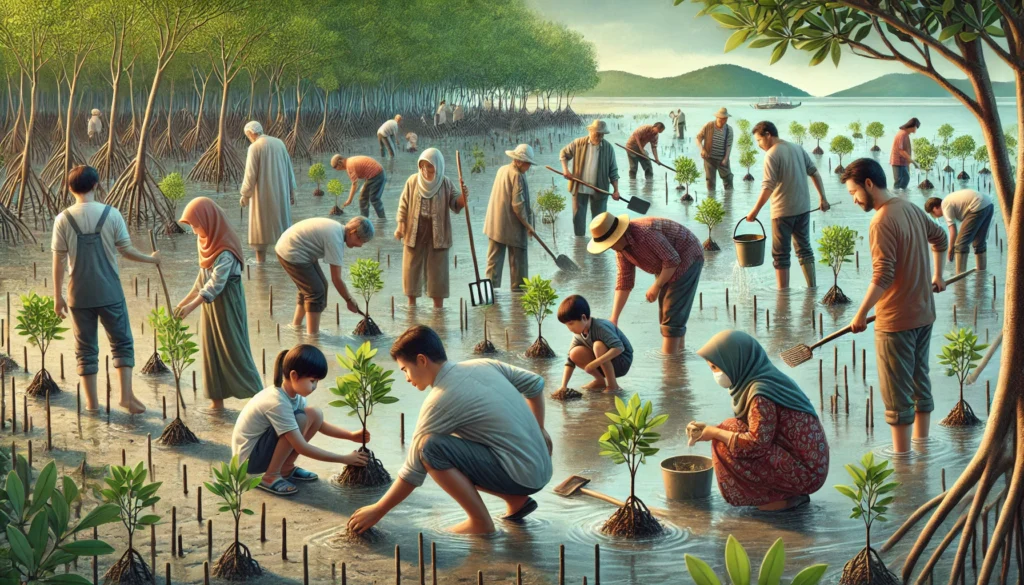
Supporting Marine Life
Mangroves create a habitat for a range of marine species such as fish, crabs, and shrimp. These ecosystems serve as breeding and nursery grounds, contributing to the health of fisheries and supporting local economies. A healthy marine population also helps maintain the ecological balance and supports biodiversity.
Improving Water Quality
Mangrove forests act as natural filters, trapping sediments, pollutants, and nutrients from the water. This filtration process improves water quality, benefiting marine life and human populations that depend on these waters for their livelihoods.
Mangroves in Indian Culture and Economy
Mangroves have been an integral part of Indian culture and economy for centuries. Coastal communities rely on them for various resources, including timber, fuelwood, and honey. The fishing industry, vital to many local economies, benefits immensely from the nursery habitats provided by mangroves.
In addition to their economic value, mangroves hold cultural significance. They are often featured in local folklore and traditions, symbolizing resilience and protection. As we move towards more sustainable practices, preserving mangroves is crucial for environmental reasons, maintaining cultural heritage, and supporting local economies.
Challenges Faced by Mangroves
Despite their importance, mangroves are threatened by human activities and climate change. Here are some of the critical challenges they face:
Coastal Development
Urbanization and industrialization have led to clearing mangrove forests to make way for infrastructure projects, tourism, and aquaculture. This destruction reduces the natural protection that mangroves provide and leads to habitat loss for many species.
Pollution
Mangroves are highly sensitive to agricultural runoff, industrial waste, and plastic debris pollution. These pollutants can damage the delicate root systems and reduce the overall health of the mangrove ecosystem.
Climate Change
Increasing sea levels and shifting weather patterns present serious risks to mangrove forests. Increased salinity and extreme weather events can disrupt the balance of these ecosystems, making it difficult for mangroves to survive and thrive.
Efforts to Protect and Restore Mangroves
Recognizing the importance of mangroves, various efforts are being made to protect and restore these vital ecosystems. Here are some initiatives:
Government Policies and Regulations
The Indian government has established policies and regulations aimed at safeguarding mangrove forests. These include restricting deforestation, promoting sustainable coastal development, and supporting conservation programs. The Coastal Regulation Zone (CRZ) Notification is a policy that aims to safeguard coastal ecosystems.
Community Involvement
Local communities play a crucial role in mangrove conservation. Initiatives involving community participation, such as reforestation projects and sustainable resource management, have proven effective. Educating and empowering local populations to participate in conservation efforts ensures the long-term success of these projects.
NGO Initiatives
Non-Governmental Organizations (NGOs) are actively working to protect and restore mangrove forests in India. Organizations like the Mangrove Society of India and the WWF (World Wildlife Fund) India run various conservation, education, and advocacy programs. These NGOs often collaborate with local communities and government agencies to maximize their impact.
How You Can Help
You might wonder how you, as an individual, can contribute to protecting mangroves. Here are a few steps you can take:
Spread Awareness
Educate yourself and others about the importance of mangroves and their challenges. Disseminate information on social media, join awareness campaigns, and take part in community dialogues.
Support Conservation Efforts
Donate to organizations working on mangrove conservation or volunteer your time for reforestation projects. Your support can make a significant difference in protecting these vital ecosystems.
Advocate for Policies
Support policies that protect coastal areas and promote sustainable development. Engage with local representatives and policymakers to advocate for stronger environmental regulations.
Reduce Pollution
Minimize your use of plastic and properly dispose of waste to reduce Pollution that can harm mangrove ecosystems. Participate in clean-up drives and encourage others to do the same.
Conclusion
Mangroves play an essential role in protecting coastal areas. These unique forests safeguard our shorelines, support marine life, improve water quality, and provide resources for local communities. Protecting and restoring mangroves is crucial for a sustainable future in India, where coastal areas are particularly vulnerable.
By understanding the importance of mangroves and taking steps to support their conservation, we can help ensure that these vital ecosystems continue to thrive. Together, we can make a difference and protect our natural heritage for generations.
Author’s Note:
Thank you for reading! I hope this blog has highlighted the crucial role of mangroves in coastal protection. Let’s work together to protect these vital ecosystems and ensure a sustainable future for our planet.
G.C., Ecosociosphere contributor.

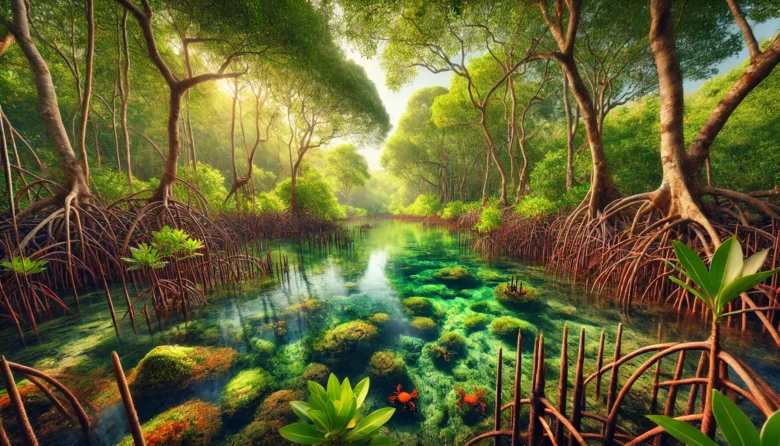
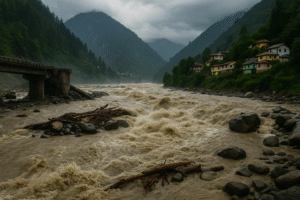
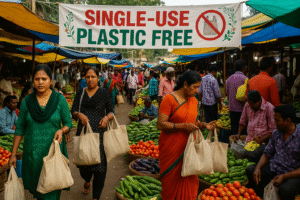
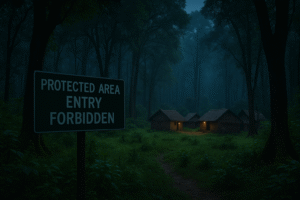
Comments
Have you ever thought about adding a little bit more than just your articles? I mean, what you say is fundamental and all. But just imagine if you added some great pictures or videos to give your posts more, “pop”! Your content is excellent but with images and videos, this blog could undeniably be one of the most beneficial in its field. Superb blog!